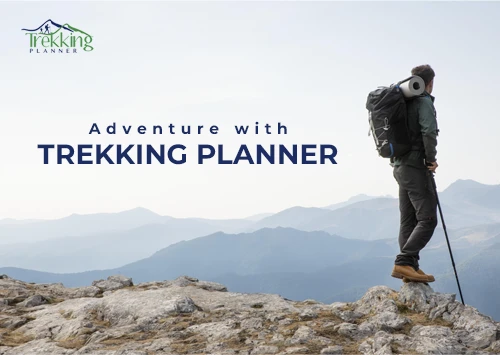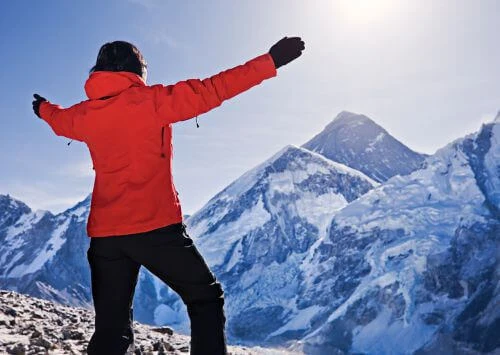History and significance of the Manaslu region
The Manaslu region holds tremendous historical and cultural significance. The name "Manaslu" translates to "Mountain of the Spirit" in the local dialect, and it is believed to be the dwelling place of the powerful deity that protects the region. This belief has led to the mountain being considered sacred by the locals, adding to its allure.
The region also played a crucial role in the ancient trade routes between Nepal and Tibet. Traders would traverse the Manaslu region, exchanging goods and ideas, contributing to the area's cultural diversity. Today, remnants of this trade route can still be seen, adding an element of history to the trek.
Furthermore, the Manaslu Region has several ethnic communities, including the Gurungs, Tamangs, and Tibetans. These communities have preserved their unique traditions, customs, and festivals, offering trekkers an opportunity to immerse themselves in the rich cultural heritage of the Himalayas.
Manaslu Region, a holy mountain near Tibet, is restricted due to its proximity to the region and the presence of rare animals like snow leopards.

Understanding restricted areas in Nepal
Nepal, known for its natural beauty and diverse landscapes, has designated certain areas as restricted. These areas have specific entry requirements, including obtaining special permits and traveling with a registered trekking agency. The restriction is primarily in place to protect delicate ecosystems, preserve cultural heritage, and manage tourism sustainably.
Restricted areas are typically located in remote and pristine regions, away from the more popular trekking routes. This exclusivity ensures that these areas remain unspoiled, allowing nature to thrive undisturbed. By limiting access, Nepal aims to balance tourism and conservation, ensuring that future generations can enjoy the same wonders.
The Manaslu Circuit, with its unique blend of natural beauty, cultural heritage, and spiritual significance, has been designated a restricted area for several reasons. One primary reason is the need to preserve the fragile ecosystem of the Manaslu Conservation Area.
The Manaslu Conservation Area is home to rare and endangered species, including the snow leopard, Himalayan black bear, and red panda. By restricting access, the authorities can prevent harm to these delicate creatures and their habitats, ensuring their survival for generations.
Additionally, the restricted status helps manage the impact of tourism on the region. Overcrowding can lead to trail degradation, pollution, and disturbance to wildlife. Limiting the number of trekkers, the Manaslu Circuit can maintain its pristine condition, offering a more immersive and authentic experience for those fortunate enough to explore its trails.
Permits and regulations for trekking in the Manaslu Circuit
Trekking in the Manaslu Circuit requires obtaining specific permits and adhering to rules set by the Nepalese government. Two permits for trekking in Nepal are the Manaslu Restricted Area Permit (RAP) and the Annapurna Conservation Area Permit (ACAP).
The Manaslu RAP can only be obtained through registered trekking agencies. To ensure safety and minimize risks in the remote region, trekkers must be part of a group consisting of at least two people. Solo trekkers are not allowed. The ACAP permit is required as the Manaslu Circuit intersects with the Annapurna Conservation Area, another protected region in Nepal.
Carrying these permits at all times during the trek is essential, as authorities can conduct spot checks. Violating the permit regulations can result in fines or even expulsion from the trek.
Recommended Read:
Why a Special Permit is Required for Trekking in Manaslu Region
Trekking itinerary and highlights of the Manaslu Circuit
The Manaslu Circuit offers a challenging yet rewarding trekking experience, encompassing diverse landscapes, cultural encounters, and breathtaking views. The typical itinerary for the Manaslu Circuit takes around 14 to 18 days, depending on the pace and acclimatization needs of the trekkers.
The journey begins in the town of Soti Khola and gradually ascends through lush forests, terraced fields, and charming villages. Trekkers pass through Jagat, Deng, and Namrung, each offering unique cultural experiences and stunning vistas of snow-capped peaks.
One of the highlights of the Manaslu Circuit is crossing the Larkya La Pass, which stands at an altitude of 5,106 meters (16,750 feet). This challenging section rewards trekkers with panoramic views of the surrounding mountains, including Manaslu, Himlung Himal, and Annapurna II.
The trek concludes in the village of Dharapani, where trekkers join the Annapurna Circuit trail, offering an opportunity to extend their journey further or head back to civilization.

Alternative trekking options in Nepal
While the Manaslu Circuit is undoubtedly a remarkable trek, it may not suit everyone. Fortunately, Nepal offers alternative trekking options catering to various preferences and fitness levels. Here are a few popular alternatives:
Everest Base Camp Trek: Embark on a journey to Mount Everest's base camp, the world's highest mountain. This trek offers stunning views of the Everest region, Sherpa culture, and a chance to witness the iconic Khumbu Icefall.
Annapurna Base Camp Trek: Explore the Annapurna region and trek to the base camp of the majestic Annapurna mountain range. This trek takes you through diverse landscapes, charming villages, and terraced fields, with the highlight being the breathtaking sunrise view from Poon Hill.
Langtang Valley Trek: Discover the beautiful Langtang Valley just north of Kathmandu. This trek combines stunning mountain views, lush forests, and encounters with the Tamang community, known for their warm hospitality.
Tips for trekking in the Manaslu Circuit
Trekking in the Manaslu Circuit requires careful planning and preparation. Here are some essential tips to make your journey a success:
- Physical Fitness: The Manaslu Circuit is a strenuous trek involving long walking hours and significant altitude gains. Prior physical fitness training for trekking in Nepal will help prepare your body for the challenges ahead.
- Acclimatization: Proper acclimatization is crucial to prevent altitude sickness. Take ample rest days during the trek, stay hydrated, and listen to your body's signals.
- Packing Essentials: For packing for trekking in Nepal, opt for lightweight yet warm clothing, sturdy trekking shoes, a good-quality sleeping bag, and a reliable backpack. Remember to bring a first aid kit, sunscreen, and insect repellent.
- Hiring a Guide and Porter: Consider hiring a local guide and porter to enhance your trekking experience. They can provide valuable insights, assist with navigation, and take care of your belongings, allowing you to immerse yourself fully in the journey.
- Respect Local Culture: Nepal is a culturally rich country, and it is essential to respect local culture and traditions. Dress modestly, ask for permission before taking photographs of people, and be mindful of local beliefs and practices.
Sustainable tourism practices in the Manaslu region
Responsible travelers must minimize their environmental impact and support sustainable tourism practices. Here are some ways you can contribute to the conservation efforts in the Manaslu region:
- Minimize Waste: Carry a reusable water bottle and water purification tablets to avoid single-use plastic bottles. Dispose of waste properly and participate in organized clean-up campaigns if available.
- Support Local Communities: Stay in locally-owned teahouses or lodges, eat local cuisine, and purchase handmade crafts directly from the artisans. This way, you contribute to the local economy and empower the communities.
- Follow the Leave-No-Trace Principles: Leave the trails as you find them. Avoid littering, respect wildlife, and stay on designated paths to minimize your impact on the fragile ecosystem.
- Opt for Eco-Friendly Trekking Agencies: Choose trekking agencies prioritizing sustainable practices, such as waste management, energy conservation, and responsible tourism initiatives.
Conclusion: The allure of the restricted Manaslu Circuit
The Manaslu Circuit, with its restricted status and limited access, holds a unique allure for adventure seekers. Its untouched beauty, rich cultural heritage, and breathtaking landscapes make it a lifetime trek. By understanding the reasons behind its restricted area designation and adhering to the necessary permits and regulations, you can embark on a journey that fulfills your wanderlust and contributes to the conservation and sustainable development of the Manaslu region. Unveil the enigma of the Manaslu Circuit and experience the magic of Nepal's hidden gem.
FAQs
How difficult is Manaslu?
The Manaslu Circuit is considered a challenging trek suitable for experienced trekkers. Its difficulty stems from the high altitude, rugged terrain, and long days of hiking. Trekkers should be prepared for steep ascents, cold temperatures, and altitude sickness. Proper preparation and acclimatization are essential to tackling the trek successfully.
Why is Manaslu famous?
Manaslu is famous for its stunning natural beauty and remote trekking experience. It boasts breathtaking views of snow-capped peaks, lush forests, and traditional Tibetan culture. The Manaslu Circuit offers an off-the-beaten-path adventure with fewer crowds, making it a sought-after destination for those seeking solitude and authentic experiences.
When was the Manaslu Conservation Area established?
The Manaslu Conservation Area was established in 1998. This protected area conserves the Manaslu region's unique biodiversity, culture, and natural landscapes. It plays a crucial role in preserving the environment and supporting sustainable tourism.
What are the dangers of Manaslu?
The dangers of trekking in Manaslu include high altitude sickness, challenging weather conditions, and rugged terrain. Trekkers must be cautious of sudden weather changes, avalanches, and the physical demands of the trek. Proper preparation, acclimatization, and having a knowledgeable guide are vital to minimizing these risks and ensuring a safe trekking experience.







